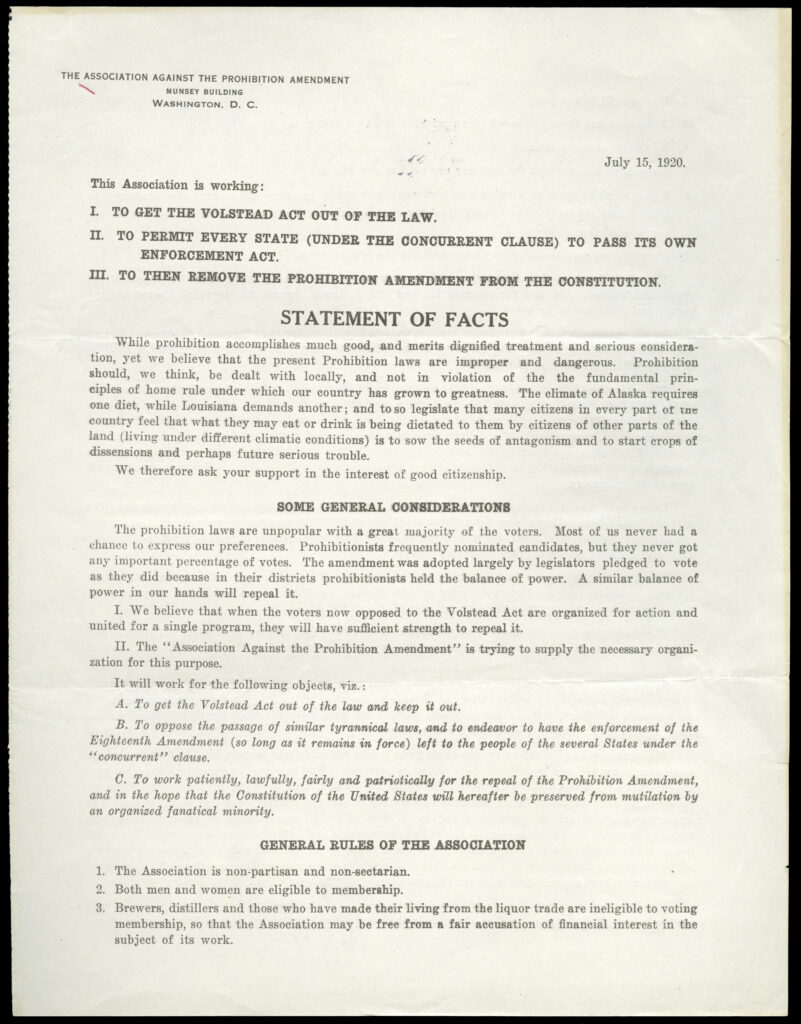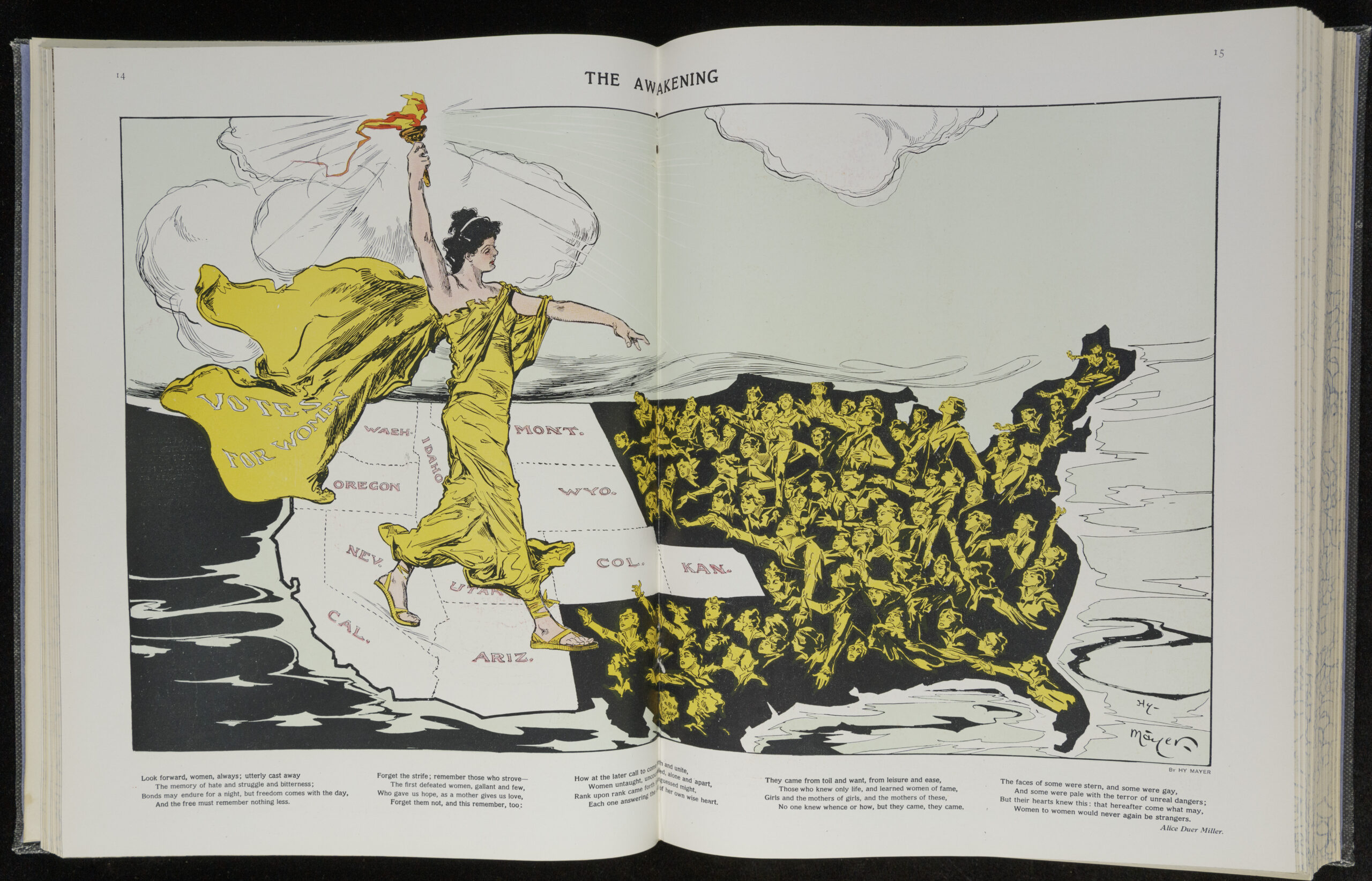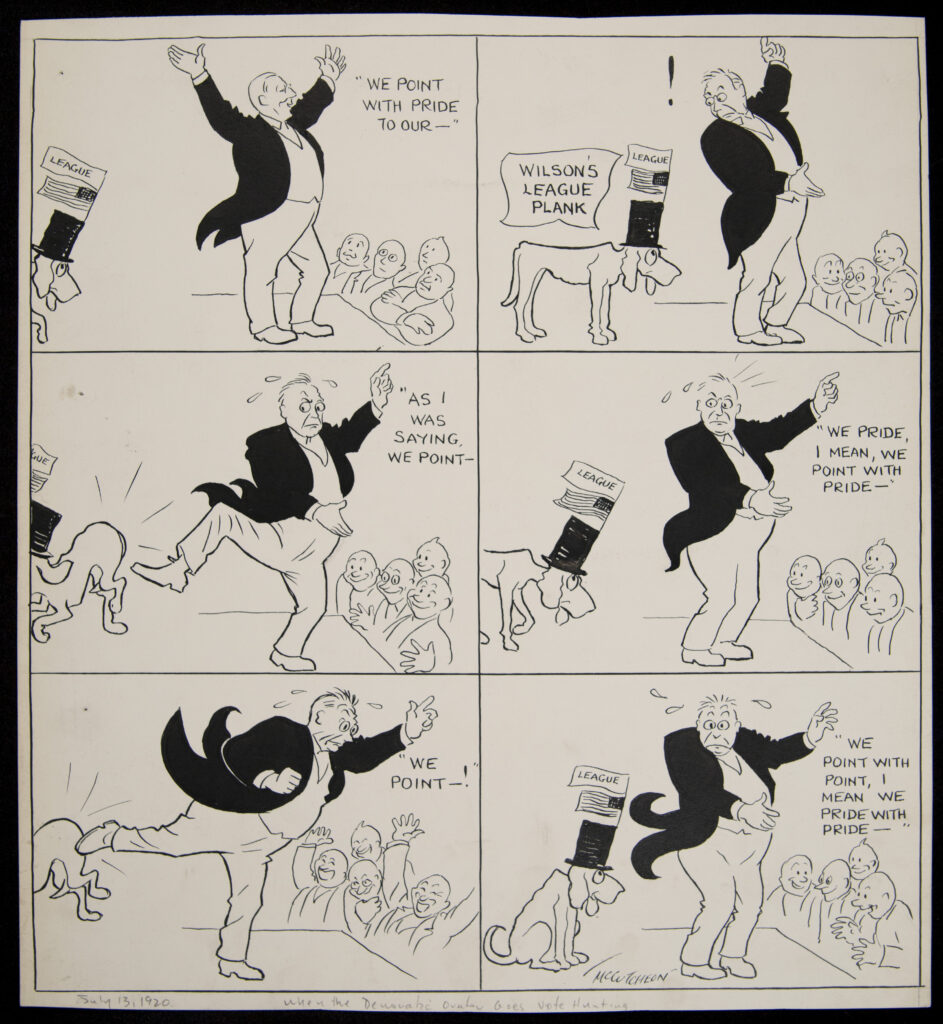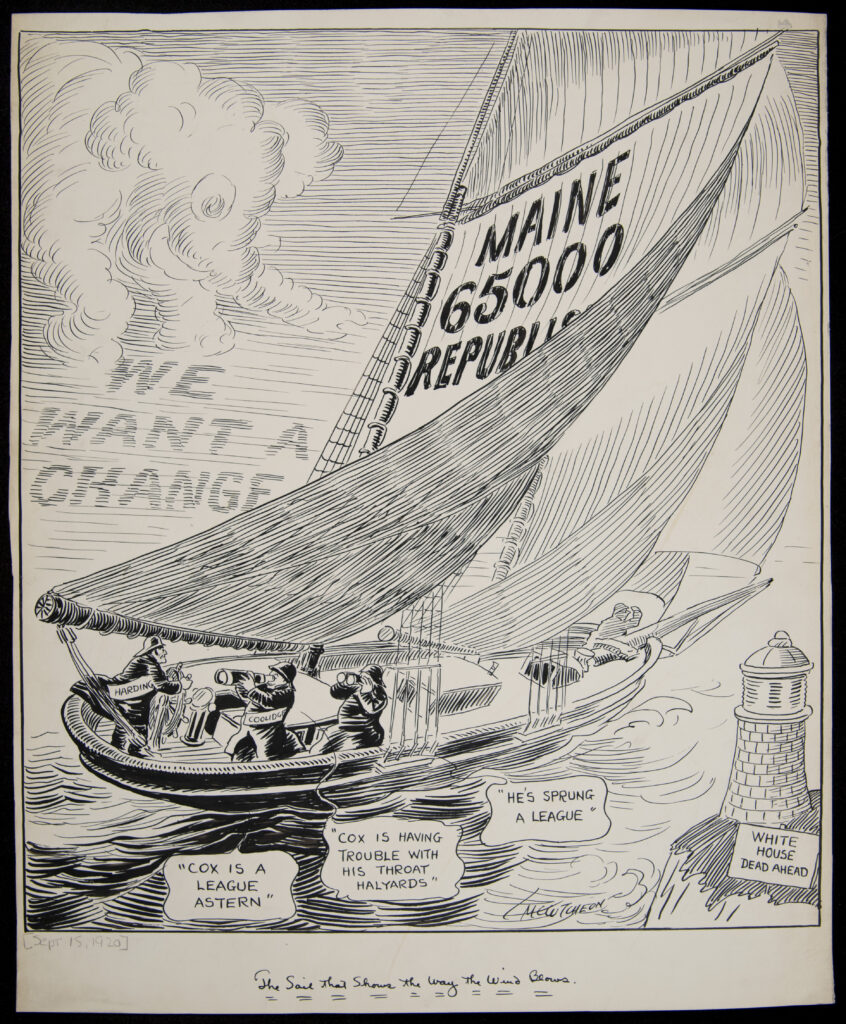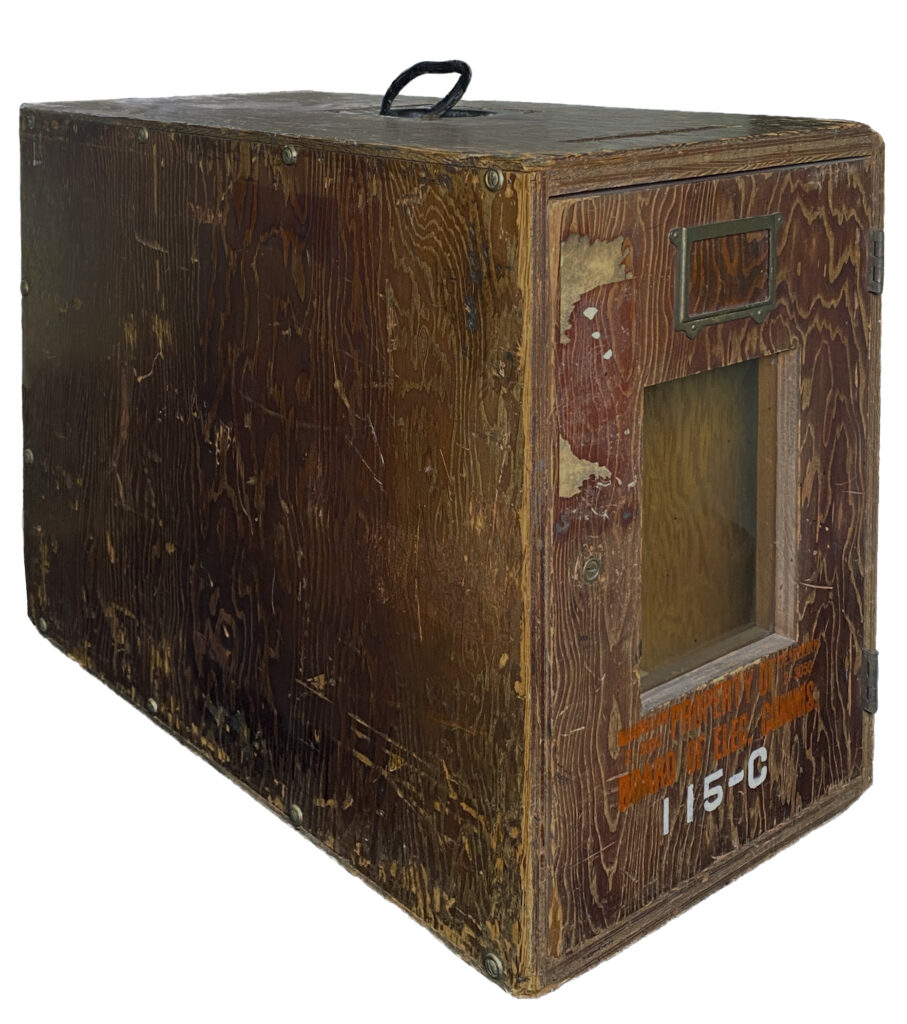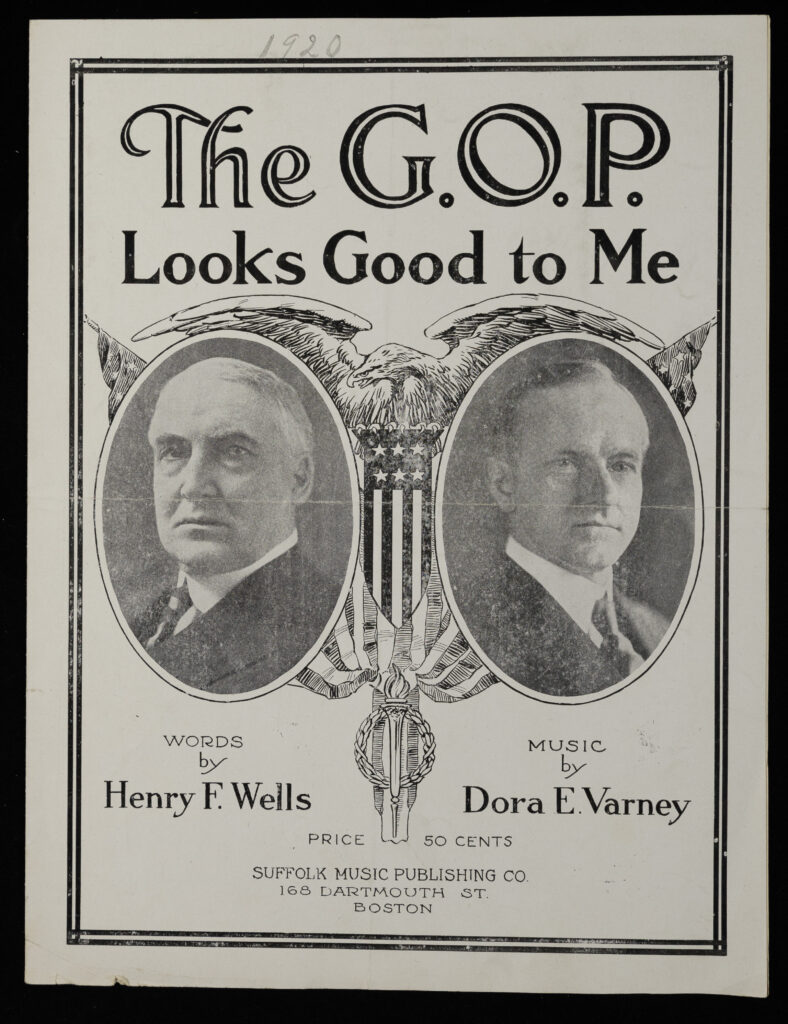Introduction

In November 1920 voters went to the polls after four years of profound change in the United States. The outbreak of World War One/I followed by the Spanish Flu pandemic meant the country could no longer isolate itself from international affairs. Long-fought campaigns seeking national prohibition on the sale, manufacture, and transportation of alcoholic beverages and the adoption of universal suffrage for women reached their end. Both promised to transform politics and everyday life. During the summer of 1919 civil unrest exposed inequities in race and class that had been ongoing since before the nation’s founding.
The Republican candidate for President, Ohio Senator Warren G. Harding, called for a return to “normalcy.” But what did “normalcy” mean? Normal how and for whom? Was such a return possible or desirable?In 1920, voters faced questions that may sound familiar today: What role should the United States play in the world? Should government, in the case of something like national prohibition, limit the behaviors of individuals on behalf of a common good? Are life, liberty, and the pursuit of happiness available to all Americans?
In 1920 voters faced a choice: move forward or backward as a new decade began. At the time there were over 105 million people living in the United States and about 54 million of them were eligible to vote. A majority of Americans lived in urban rather than rural communities. Close to 90% of Americans had been born in the United States and close to an equal number identified as white. There were slightly more men than women, and the median age was 25. Of these women, over 26 million were eligible to vote on all candidates and measures on a ballot in all 48 states for the first time in the nation’s history. [1]

If you lived during this moment in history, what decision would have you made? What direction would you have chosen?
Essential Questions:
- What were some of the issues motivating voters in the 1920 presidential election and what did the results of the election suggest about the national attitude toward these issues?
- What were the means through which one became an informed and engaged voter in 1920?
- How did the strategies and style of the Warren G. Harding campaign reflect his call for a “return to normalcy”?
Issues
In 1920, voters faced questions that may sound familiar today: What role should the United States play in the world? Should government, in the case of something like national prohibition, limit the behaviors of individuals on behalf of a common good? Are life, liberty, and the pursuit of happiness available to all Americans?
Americans were divided over whether the United States should join the League of Nations in the aftermath of World War I. The League, an international organization formed with the intention of preventing future conflicts, had been championed by President Woodrow Wilson, who had intended to run for an unprecedented third term in office before suffering a stroke in 1919. Critics of the League feared it would lead the United States into further international entanglements and limit the nation’s independence in foreign relations.

The United States’ involvement in World War I had led to a period of economic prosperity followed by a significant downturn after the conclusion of hostilities in November 1918. More and more Americans became concerned with the HCL or “High Cost of Living” in the years after the War. Both the Democratic and Republican parties supported prohibition and women’s suffrage, but the impact each would have was largely unknown in 1920. Both parties opposed expanding immigration to the United States and argued for strict quotas, particularly on immigrants from Asia. The parties’ platforms, formally adopted at their respective national conventions that summer, failed to address the racial and economic inequality that had led to civil unrest across the country a year prior. This unrest often turned violent, leading to the loss of life and property. Extra-judicial lynchings had occurred all over the United States in the decades after Reconstruction, prompting the introduction in the US House of Representatives in 1918 of a federal anti-lynching bill. The National Association for the Advancement of Colored People (NAACP) launched a national campaign to raise awareness around this issue, and the bill passed the House of Representatives in 1922 before being blocked by Southern White Democrats in the Senate.
With the positions of the major political parties aligned or silent on these issues, the campaigns focused on whether the country should move forward into a new decade or return to where it was at the beginning of the century.
Discussion Questions:
- What reasons does the Association Against the Prohibition Amendment give for opposing prohibition and what evidence does the flyer use to persuade voters to share this position?
- What does the title “The Awakening” refer to in the illustration from Puck and how is the spread of support for women’s suffrage depicted in the illustration?
- Why would the NAACP use a map of the United States to raise awareness around the crime of lynching? Who was the organization trying to persuade with this map?
Candidates and Campaigns

Legend has it that in a smoke-filled room in the Blackstone Hotel in Chicago, Republican Party leaders selected Senator Warren G. Harding as a compromise candidate based on his small-town background, genial personality, and good looks. Democrats reached a compromise at their convention in San Francisco, selecting Governor James M. Cox, who pledged to continue the policies of the incumbent Democratic president, Woodrow Wilson. Although incarcerated for protesting US involvement in World War I, Eugene V. Debs became the nominee for the fifth time of the Socialist Party of America.

Senator Harding and Governor Cox were similar in background. Both were from Ohio, a state where support was evenly divided between the major parties and that was critical to securing enough electoral college votes to win the presidency. Both were newspaper publishers before they sought public office. And both were little known on the national stage, leading the major parties to focus more on the mood of the country than on the qualities of their candidates as the campaigns progressed.
Governor Cox and his running mate, Assistant Secretary of the Navy Franklin D. Roosevelt, crisscrossed the country by rail to shore up support in states that the Democrat Woodrow Wilson had barely won in the 1916 election. Senator Harding stayed in Ohio, giving speeches from the front porch of his house in Marion before large crowds of voters from all across the country. His advisor, Chicago advertising executive Albert Lasker, ensured that this nostalgia-tinted campaign would achieve national exposure through mass media such as magazines, newsreels, and phonograph recordings. The incarcerated Debs had to run his campaign through surrogates.
The campaign styles of the major parties reflected the larger message of each with Cox moving forward across a changing country and Harding returning to a small Midwestern town where tradition prevailed.
Discussion Questions:
- What do the details on the postcard of Warren G. Harding’s house in Marion suggest about Harding as a person and candidate?
- What message are the lyrics for “The G.O.P. Looks Good to Me” trying to communicate to listeners? (Listen to the song here.)
- What are the positions on issues taken by the Socialist Party in their platform? What claims does the platform make to persuade voters?
Cartoons
Cartoonist John T. McCutcheon (1870-1949) chronicled the 1920 election from start to finish for the Chicago Tribune. At this point in his career McCutcheon was well-established as a newspaper cartoonist, alternating political commentary with more whimsical work. Like the newspaper for which he worked, McCutcheon favored the Republican Party, a position evident in his cartoons. Accessible and playful, the cartoons offer a view on how everyday Americans, like the readers of the Tribune, understood and were experiencing the presidential campaigns of Republican Warren G. Harding and Democrat James M. Cox.
While McCutcheon drew numerous cartoons related to the 1920 presidential election, the four included here are featured in the Newberry exhibition Decision 1920 and cover the period of June through September 1920. In “Relative Importance of Great Public Issues,” McCutcheon has his reoccurring journalist character ask a man of prominence for his views on various policies, none of which produces much of a response until the topic of national prohibition is raised. Two of McCutcheon’s cartoons, “When the Democratic Voter Goes Vote Hunting” and “The League of Nations,” refer to Cox’s support of the United States joining a precursor to the United Nations formed in the aftermath of World War I to prevent future conflicts. Like many Americans, McCutcheon was skeptical of the United States joining an international body that might draw the country more deeply into global affairs and dictate policy. “The Sail Shows the Way the Wind Blows” reflects an electoral quirk of the period: Maine held its gubernatorial and congressional elections in September, the results often predictive of the outcome of the presidential election in November. When the Republican candidate beat the Democratic candidate for Governor by more than 65,000 votes with a campaign focused on national issues and engaging women voters, it was regarded as a good sign for Warren G. Harding.
Discussion Questions:
- The cartoon “Relative Importance of Great Public Issues” suggests cartoonist John T. McCutcheon’s attitude toward prohibition. What details in the cartoon support this attitude?
- Why would McCutcheon depict the League of Nations as a dog continually appearing behind the “Democratic Orator” in his cartoon? What details might make the image of this dog humorous to readers in 1920?
- What details does McCutcheon use in the first two panels of “The League of Nations” cartoon to show the impact the issue is having on the Republican and Democratic campaigns?
- Without outside context, what are some visual details in “The Sail Shows the Way the Wind Blows” that might help a reader today to figure out the cartoon’s meaning?
Election

Over 26.7 million citizens cast a ballot in 1920, an increase of more than eight million voters over the previous presidential election. The cause of this increase: women voters. Senator Warren G. Harding won with 60.3% of the popular vote, the largest percentage since the election of 1820, when incumbent James Monroe ran unopposed. Eugene V. Debs, in his fifth attempt at the presidency, received more than 900,000 votes, his largest total but just over 3% of the popular vote. After eight years of change and upheaval under the administrations of Democrat Woodrow Wilson, the White House returned to Republican Party control, where it remained in the decade ahead. The election of 1920 is often regarded by historians as marking the end of the Progressive Era, which favored reforms in industry and governance, and the return to a more conservative approach to government.

Shortly after taking office, President Harding commuted Eugene V. Debs’s prison sentence. In the years ahead, the Harding administration would oversee the establishment of the Bureau of the Budget, today’s Office of Management and Budget, which created greater government accountability. Harding himself would challenge the segregationist policies and practices of the American South when he delivered a speech in favor of a federal anti-lynching bill before a mixed-race audience in Birmingham, Alabama. While on a tour of the West Coast in August 1923, Harding became ill and died suddenly. Not long after his death, political and personal scandals tarnished his legacy. Nonetheless his Vice President, Calvin Coolidge, and Secretary of Commerce, Herbert Hoover, would occupy the White House through the end of the decade.
In November 1932, with voters experiencing the effects of the Great Depression, Governor Cox’s former running mate, Franklin D. Roosevelt, defeated Hoover by a landslide margin that mirrored Harding’s over Cox. Roosevelt’s campaign used the nostalgic “Happy Days Are Here Again” as its song, but his administration ushered in another period of profound change and transformation.
Discussion Questions:
- Why would voters see a window on the wooden ballot box when they voted?
- Where does the map suggest the majority of Americans lived? How does this map compare to the electoral college map today?
About the Author
Paul Durica is the Director of Exhibitions at the Newberry Library. He has a PhD in English Language and Literature from the University of Chicago. His writing has appeared in the Journal of American Studies, Oxford Handbook to Jack London, Poetry, Tin House, and elsewhere. With Bill Savage, he edited Chicago by Day and Night: The Pleasure Seeker’s Guide to the Paris of America (Northwestern UP, 2013), an 1893 guide to the city and World’s Fair.
1920 Election Issues
These three documents–from the Association Against the Prohibition Amendment, the Socialist Party of America, and the NAACP–present some of the issues that voters were considering in 1920.
Political Cartoons
Political cartoons like these ones from Puck and The Chicago Tribune make arguments for and against major political questions. John T. McCutcheon, a longtime cartoonist for the Tribune, was a staunch Republican, and his opinions are clear in his work.
Election Participation and Strategies
These materials speak to the changing political landscape around the 1920 election and the strategies used to engage voters, which contributed to the end of the Progressive Era and move toward greater conservatism.
Further Reading
Bagby, Wesley M. The Road to Normalcy: The Presidential Campaign and Election of 1920. Baltimore: Johns Hopkins P, 1962.
Cooper, John M. Breaking the Heart of the World: Woodrow Wilson and the Fight for the League of Nations. New York: Cambridge UP, 2001.
Cox, James M. Journey Through My Years. New York: Simon & Schuster, 1946.
Dean, John. Warren G. Harding. New York: Times Books, 2004.
Freeberg, Ernest. Democracy’s Prisoner: Eugene V. Debs, the Great War, and the Right to Dissent. Cambridge: Harvard UP, 2009.
Morello, John A. Selling the President, 1920: Albert D. Lasker, Advertising, and the Election of Warren G. Harding. Westport, CT: Prager, 2001.
Payne, Philip G. Dead Last: The Public Memory of Warren G. Harding’s Scandalous Legacy. Columbus: Ohio State University P, 2009.
Pietrusza, David. 1920: The Year of the Six Presidents. New York: Carroll & Graf, 2007.
Russell, Francis. The Shadow of Blooming Grove: Warren G. Harding in His Times. New York: McGraw-Hill, 1968.
Related Resources
Newberry Exhibition Decision 1920. This short video provides and overview of the electorate in 1920.
Recordings of campaign songs. Listen to new recordings of songs from the 1920 Warren G. Harding presidential campaign.










